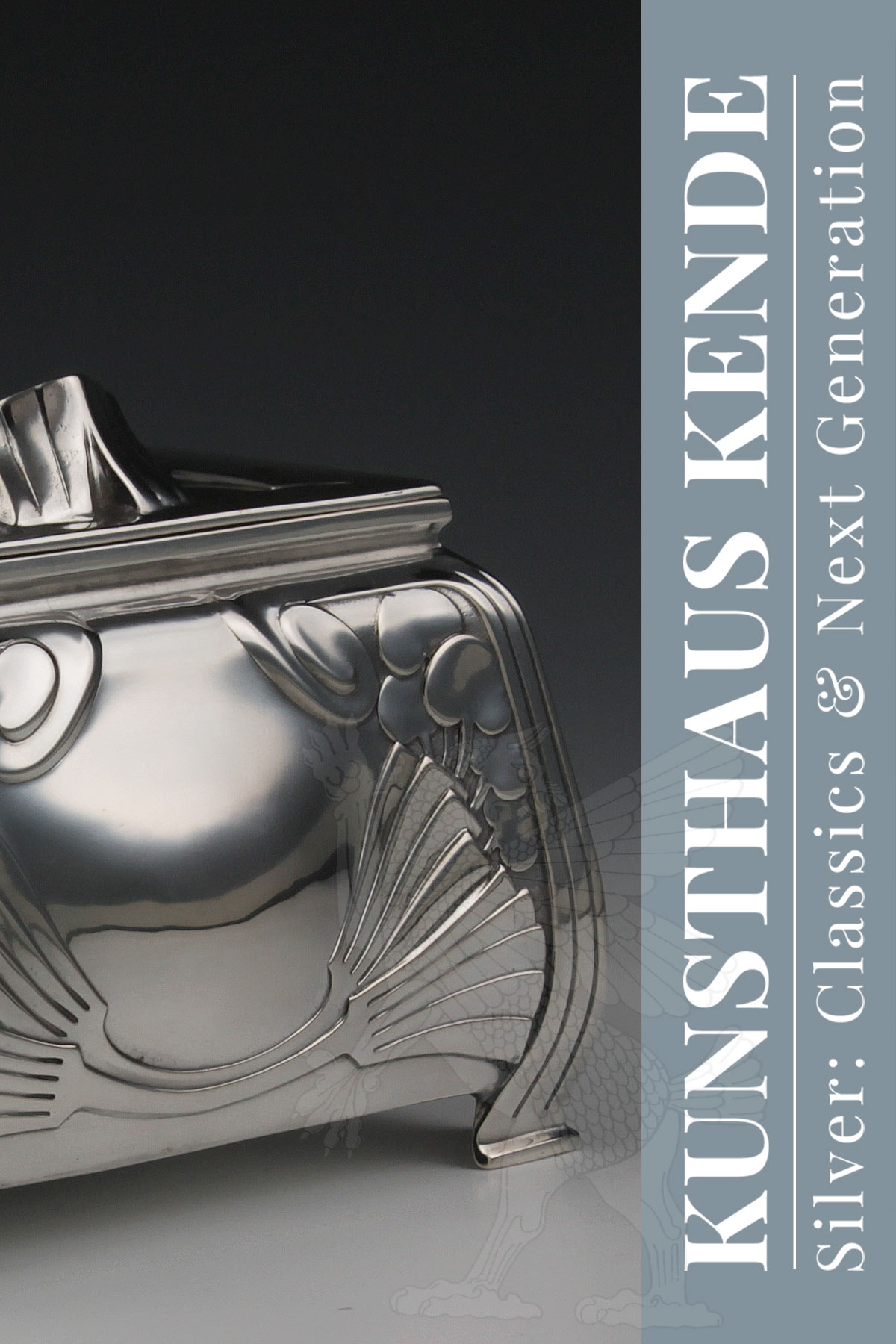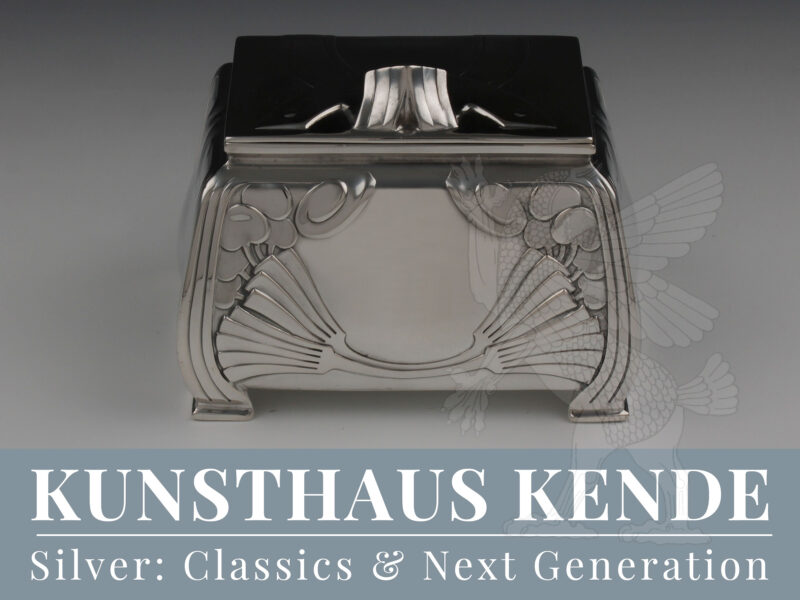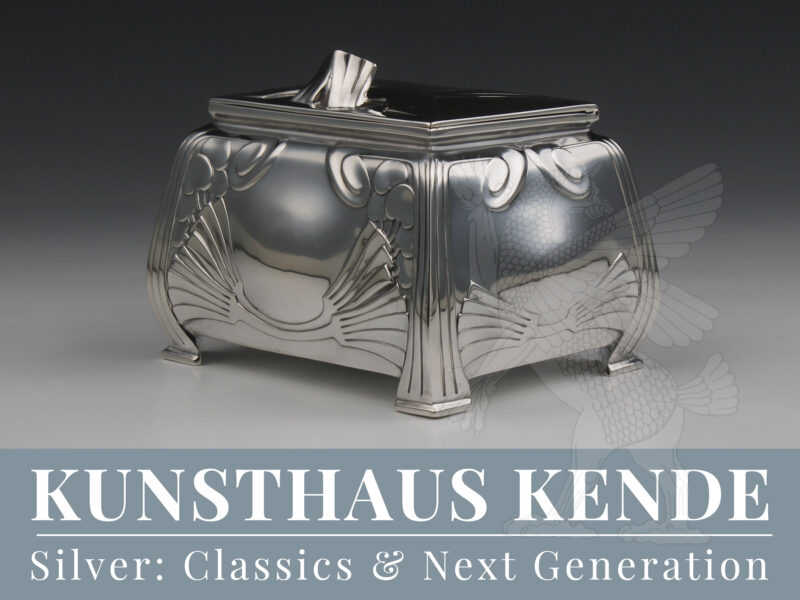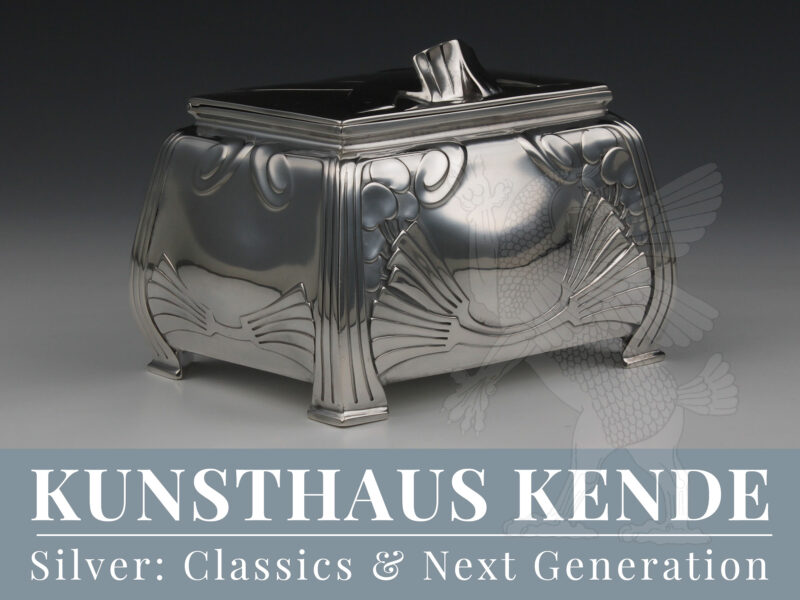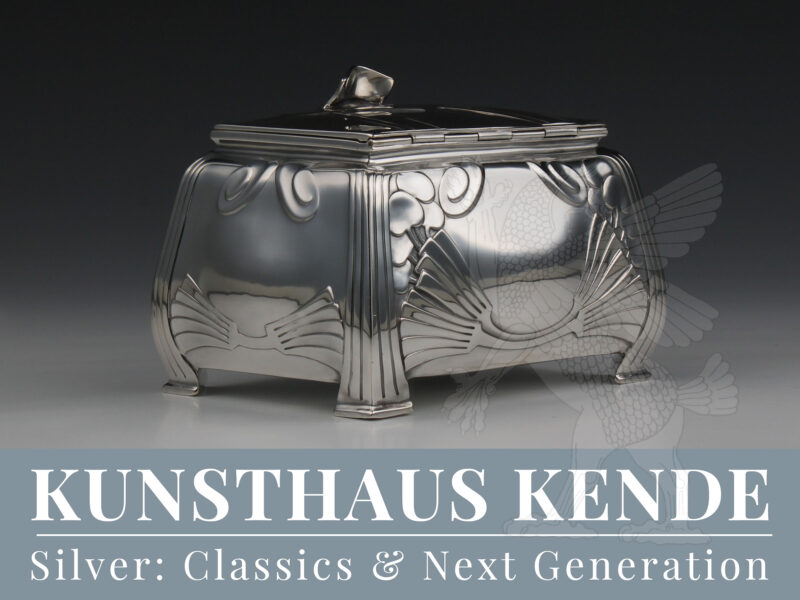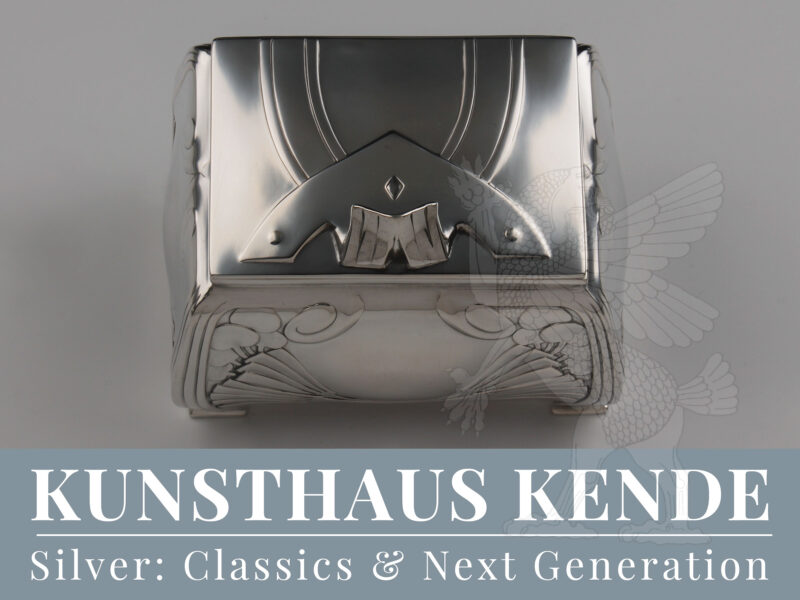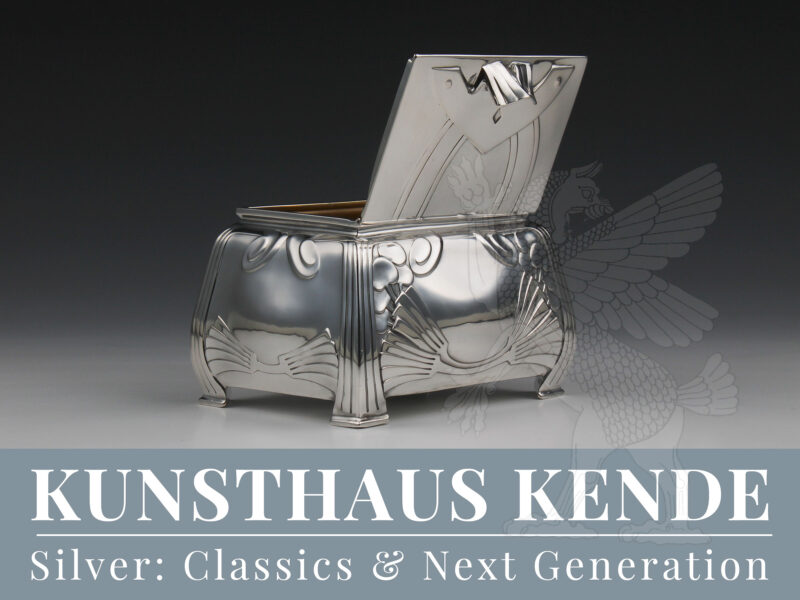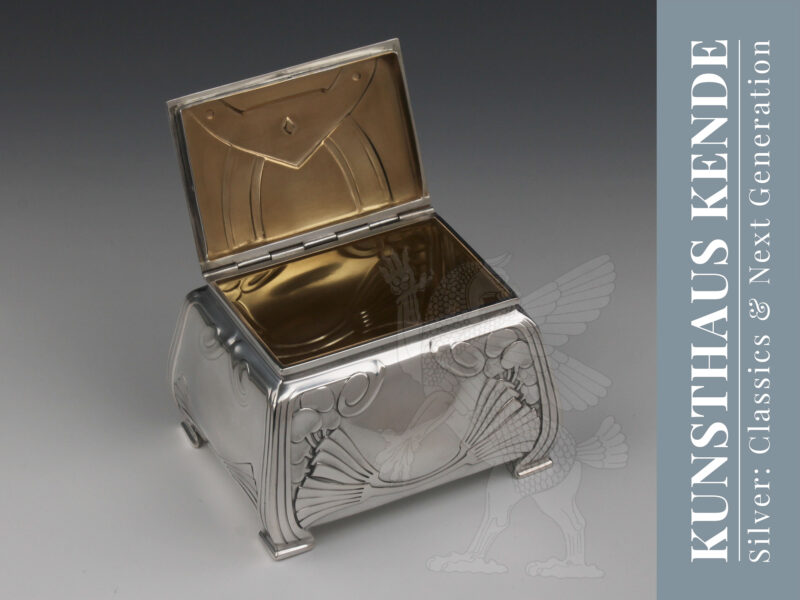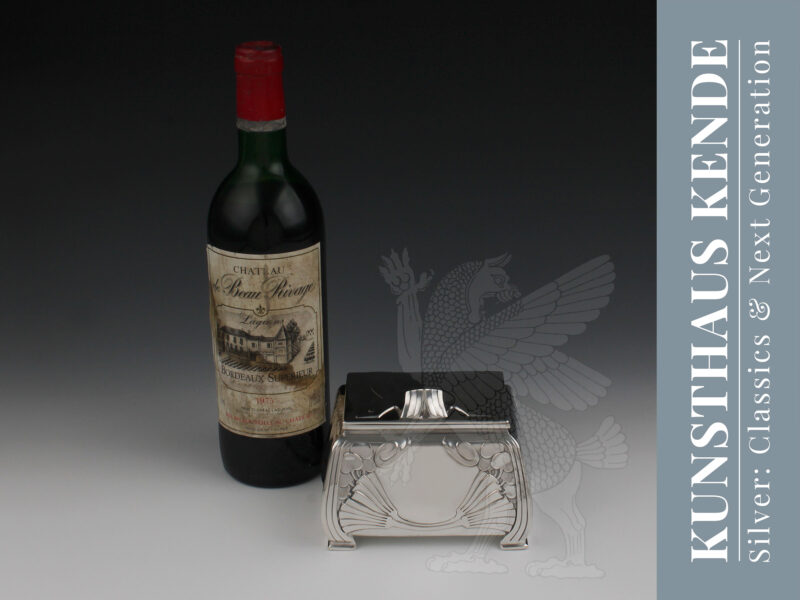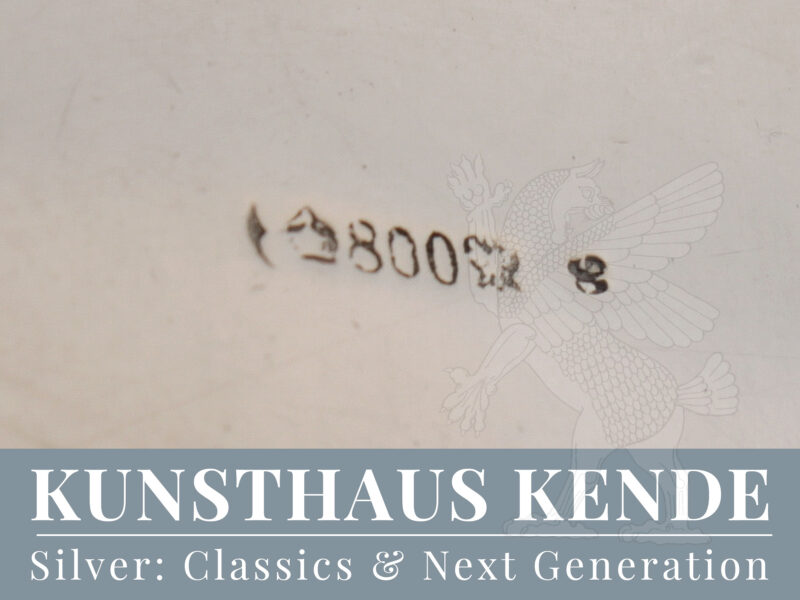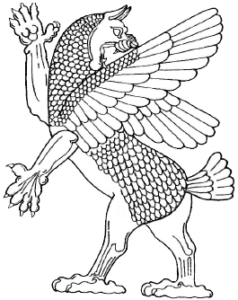Item number: 59065
An Art Nouveau 800 grade silver lidded sugar box,
Heilbronn circa 1900 by Bruckmann & Söhne
Standing on four bracket feet with subtly curved edges and a slightly bulging body towards the centre with abstract floral Art Nouveau pattern. The lid worked accordingly and has a ribbon-shaped lid knob. Gilded interior.
The lidded box is probably based on a studio design by Bruckmann & Söhne and is an elegant example of the high quality silver work in the Art Nouveau style that was produced during the heyday of the silverware factory.
13.2 cm / 5.19″ length, 10.4 cm / 4.09″ width, 8.2 cm / 3.22″ tall to the rim, 9.7 cm / 3.81″ tall to the handle; 361.6 g / 11.62 oz
The silverware factory Bruckmann & Söhne
The silverware factory Bruckmann & Söhne emerged under Georg Peter Bruckmann (1778-1850) in 1805 on the market square in Heilbronn from the silversmith’s shop of his father Johann Dietrich Bruckmann (1736-1807). The company was particularly successful with semi-finished products, which, cleverly marketed, were soon used by silversmiths in large parts of Europe for the production of silverware. His grandson Peter Bruckmann (1865-1937) took over the management in 1887, and in 1890 his brother Ernst became the second managing director. Under their leadership, the factory experienced its heyday. Peter Bruckmann in particular had a keen sense of artistic quality and engaged outstanding artists of the time to design silver objects for the company, such as Paula Straus, Rudolf Rochga, Friedrich Adler, Peter Behrens and even Josef Hoffmann. Participations in the world exhibitions in Paris and Barcelona made the company internationally famous, especially for its outstandingly elegant designs in Art Nouveau and Art Deco.
The fame of the works of the Bruckmann & Söhne silverware factory is also reflected in the fact that renowned companies in England offered their objects. For example, this lidded box or sugar bowl is shown in an advertisement by the silversmithy Connell’s in the leading art magazine of the time, The Studio, in the September 1904 issue. There the object is described as an “art silver tea-caddy”.
The lidded box is illustrated in: Krekel-Aalberse, A. (2001, 1 October). Silver. Art Nouveau and Art Déco (1880 – 1940). Arnoldsche. P. 75, fig. 39. Worked there in sterling silver and described as a presumed Viennese work.
